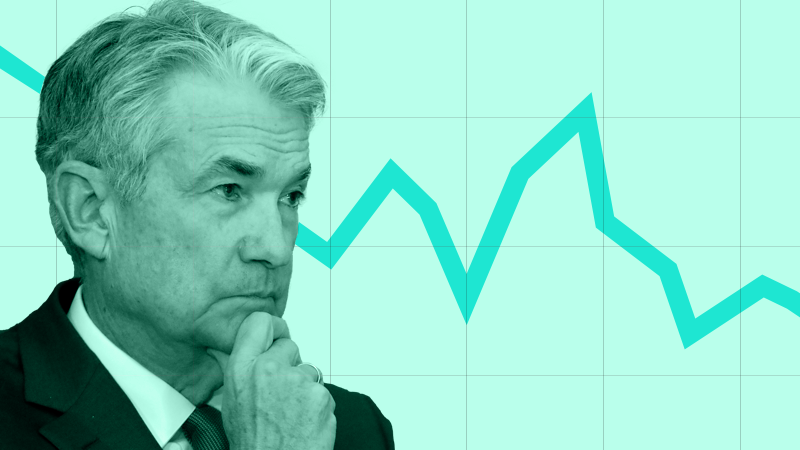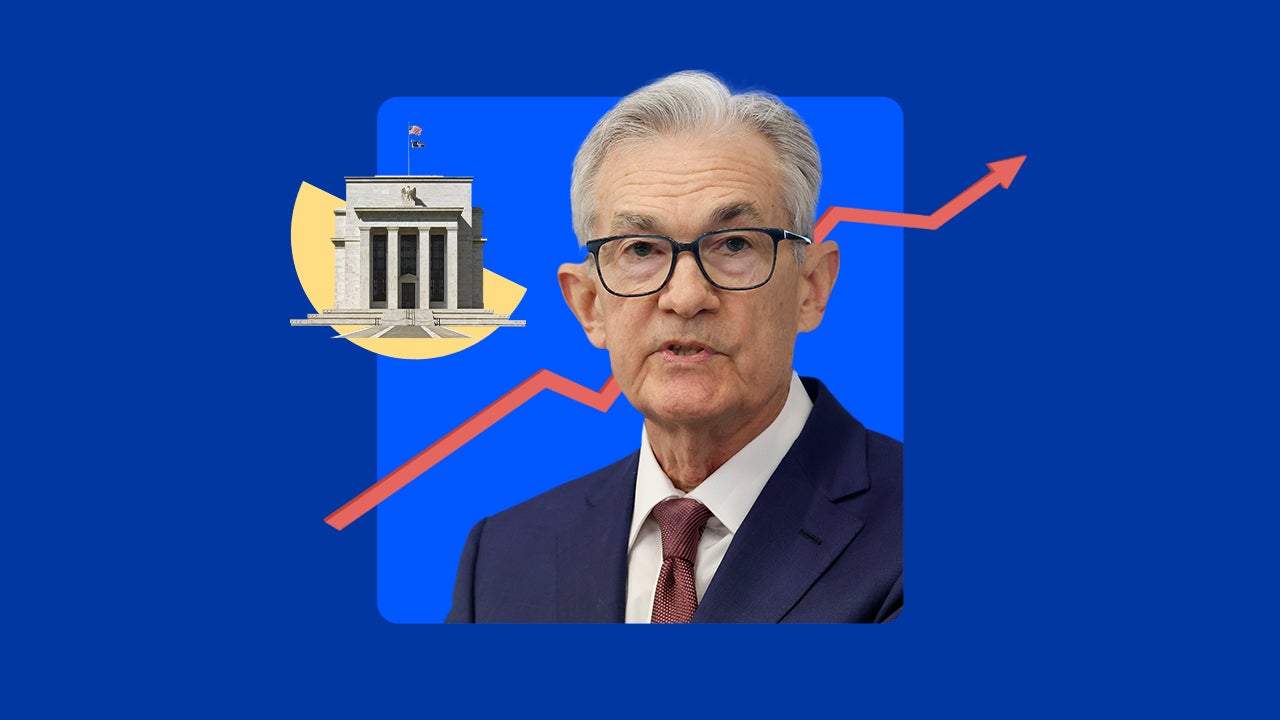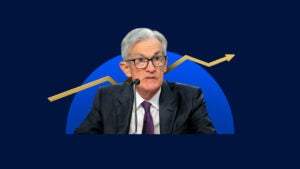6 big questions to focus on ahead of the Fed’s October meeting

Some Federal Reserve officials are doves while others are hawks – and both groups will have room to fly at the next interest rate-setting meeting.
The doves, or those who prefer keeping borrowing costs low to shield the U.S. economy, see dark clouds forming. A measure of U.S. manufacturing activity slipped to its lowest in 10 years, while hiring has decelerated and retail sales fell for the first time in seven months. Global growth is also slowing, and fresh tariff escalations could dent business investment even more.
The hawks, however, dissuade against too-loose policy to curb inflation and asset bubbles, and they’re speaking out against cutting interest rates prematurely. Geopolitical risks – from Brexit to the U.S. and China trade war – appear to have moderated, at least in the short-term. And though hiring is slowing, it hasn’t yet fallen off a cliff, with the unemployment rate sitting at a 50-year low.
“There’s something for everyone,” says Scott Clemons, CFA, chief investment strategist at Brown Brothers Harriman. “There’s enough data to warrant another rate cut; there’s enough data to not cut rates. That gives the Fed a decision that it rarely has.”
Watch for a third straight rate cut at the Fed’s October meeting
These conditions will all serve as a backdrop for the Federal Open Market Committee (FOMC) during its Oct. 29-30 meeting. Despite the likely debate, officials look like they’re set to reduce interest rates by a quarter of a percentage point – the same move they made in both July and September.
The move would be a boon for borrowers, as reductions typically shift down rates on auto loans, credit cards and home equity lines of credit (HELOCs). Savers, however, are at a disadvantage. A third rate cut this year means yields on savings accounts and certificates of deposit (CDs) will likely fall.
The move would take savers and borrowers back to where interest rates were before the June 2018 rate hike.
“At the time, it was still better than [savers] had been earning in a decade, so it’s still not a bad place to be,” says Greg McBride, CFA, Bankrate’s chief financial analyst. “It’s just not as good as it had been earlier this year.”
[READ: 5 ways the Fed’s interest rate decisions impact you]
There’s likely going to be lots to mull over after the Fed’s announcement on Wednesday. Here are six key themes to keep an eye on – and the questions they pose.
1. A rate cut seems like a given, but what’s next?
A rate cut in October looks all but locked in, judging from the federal funds rate futures market. More than 93 percent of investors are betting that the Fed will cut rates by another quarter percentage point, while the remainder believe that rates will be left unchanged, according to CME Group’s FedWatch.
But the real question is, what will the Fed do moving forward? Fed officials haven’t said much about it. In his final remarks before the upcoming meeting, Vice Chair Richard Clarida said the Fed will assess the outlook on a “meeting-by-meeting basis.”
Judging from the Fed’s “dot plot,” which tracks officials’ projections for interest rates over a three-year period, seven officials penciled in at least one more rate cut for 2019. That would be fulfilled with October’s reduction. But the markets see more – and it’s starting to become a talking point for officials, according to records from the Fed’s September meeting. A few officials noted that the Fed would have to walk back those expectations.
“Several participants suggested that the committee’s post-meeting statement should provide more clarity about when the recalibration of the level of the policy rate in response to trade uncertainty would likely come to an end,” the records said.
2. Will the post-meeting statement and press conference offer any hints about future policy?
That could be fulfilled at this meeting, some experts say.
“What the Fed is likely going to do is cut rates for a third time, but then signal that they’re essentially hitting the pause button,” McBride says. “They want to sit back, await further economic developments and monitor what happens – not only economically, but globally. They’re going to have to see hard evidence of economic deterioration that warrants [more cuts].”
It may require Federal Reserve Chairman Jerome Powell to take a more direct stance – at least more so than he did in the September post-meeting press conference, McBride says. Pushed by journalists to elaborate on the Fed’s thinking for further cuts, Powell refused to acknowledge either side, reiterating that the Fed was “not on a preset course.”
But an example of a more direct push back can be found in the Fed’s November 1998 post-meeting statement – the last time the Fed cut rates at three straight meetings while the economy was still expanding. Three cuts “can reasonably be expected to be consistent with fostering sustained economic expansion,” the statement said. Powell could mimic something similar in his comments.
3. Will the Fed feel comfortable walking back expectations just yet?
But the doves in the room might not want to walk back those expectations just yet. Recent data has shown domestic weakness, and it may be enough to warrant further policy action, says Lindsay Piegza, chief economist for Stifel, who’s expecting both an October and December rate reduction, as well as a January cut if the weakness persists.
“They don’t want to commit to a longer-term rate cutting cycle, but this lingering inability to acknowledge [weaker data] leaves them in a precarious position, with the markets then questioning the committee’s resolve to continue to step in,” Piegza says. “Market participants get nervous because the equity market is typically the first to see the weakness; the Fed is usually the last. We don’t want to play that game this time around.”
But that creates a few dilemmas, Piegza says. Communicating a concerned message may undermine confidence, and it’s also hard to keep rate cuts on the table without convincing markets that you’ll soon be reducing rates to near zero. But that just requires specific, mindful communication, Piegza says.
“They have to be very clear in their language: We see evidence of slowing momentum in the data, which warrants further support than the additional stimulus that we have provided,” she says. But they may have to say “limited additional action will stave off or be adequate to stabilize the U.S. economy.”
Cutting interest rates for a third straight meeting also challenges Powell’s characterization of the past two reductions as a “mid-cycle adjustment.” The Fed might not be able to classify additional stimulus as an act of “insurance,” nor should it want to, Piegza says.
[READ: Here’s what an ‘insurance’ rate cut actually means]
“It’s going to be very difficult for them to use that same language,” Piegza says. “They’re going to lose their credibility if they try to.”
Fed may want to act before the 2020 elections
But there’s another reason the Fed may want to act while it can: The 2020 presidential elections are approaching. Historically, the Fed doesn’t like to move rates during election years, in an effort to remain as independent as possible, Clemons says.
“It could be part of why they want to lower rates this year: so that they don’t have to next year,” Clemons says. “But it’s not off the table if the economy turns south.”
The Fed — particularly Powell — has faced friction with President Donald Trump, first for hiking rates too quickly and too much but now for not cutting rates enough. Trump escalated his comments Sept. 11, calling officials “boneheads” and urging them to slash rates to near-zero “or lower.” Trump followed up again on Thursday, tweeting that the Fed would be “derelict in its duties” if it doesn’t lower interest rates Oct. 30.
The Federal Reserve is derelict in its duties if it doesn’t lower the Rate and even, ideally, stimulate. Take a look around the World at our competitors. Germany and others are actually GETTING PAID to borrow money. Fed was way too fast to raise, and way too slow to cut!
— Donald J. Trump (@realDonaldTrump) October 24, 2019
Fed watchers have warned that the president’s direct comments on Fed policy threaten the institution’s purposeful independence. Officials, however, caution that interest rate decisions are made objectively.
[READ: What Trump can (and can’t) do when it comes to Powell and the Fed]
4. What’s puzzling officials most about the outlook?
During the Fed’s September deliberations, participants judged that downside risks had “increased somewhat” since the July meeting, mostly along the lines of trade policy uncertainty and conditions abroad, such as slowing global growth.
That hasn’t changed. Uncertainty is still one of the biggest problems right now, McBride says.
“Now that we’re in the fourth quarter, corporate planning for 2020 is well underway,” he says. “Businesses that are nervous or uncertain — they don’t borrow, they don’t invest, and often, they don’t hire. That’s the economic risk: If the views start to take hold, it quickly ripples out into the broader economy.”
But since that September meeting, Fed officials have also had to grapple with a stretch of weak domestic data. Meanwhile, Beijing and Washington arrived at a trade truce on Oct. 11 and look like they’re heading in the right direction toward a deal, though it isn’t set in stone.
“It’s more of an endogenous versus exogenous” risk picture, says Steve Rick, chief economist at CUNA Mutual Group. “The continuing trade war with China, maybe Brexit, that’s exogenous. But it’s the natural slowdown of the economy and people’s spending patterns.”
Third quarter gross domestic product – the broadest scorecard of the U.S. economy – is due Wednesday morning, just before the Fed announces its decision. Estimates say it’s likely that GDP will register just below 2 percent, according to the Atlanta Fed. It likely won’t be factored into the Fed’s decision for October, but it could play into discussions down the road.
The trade war appears to have moderated, but it isn’t completely resolved. It’ll be worth watching Powell’s characterization of the U.S. economy, to get an idea of how the Fed is judging this picture and where the biggest risks lie, Piegza says.
“At what point do they admit that a cut is outright support for a faltering economy?” Piegza says. “There’s a heightened concern about domestic conditions. Trade and geopolitical risks, as well as slower growth overseas – they remain lingering concerns. But now you have this growing concern about the strength and fragility [of] the U.S. economy.”
5. Will that softening be enough to reign in on the Fed’s division?
But it’s not a secret that the Fed has recently been divided. Powell has had dissents at every meeting since June, and that very well could continue this time around.
Likely dissenters include Boston Fed President Eric Rosengren and Kansas City Fed President Esther George, who have both voiced concerns about reducing rates too soon before there’s clear, consistent evidence that the U.S. economy has hit a rough patch. But the recent softness might get them thinking, Piegza says.
“It will reign in some of the more hawkish members to a more middle-of-the-road opinion,” she says. “None of them are outright committed to one side or the other. They’re all data-dependent. There’s just been this difference in interpretation of the data.”
6. What will three consecutive rate cuts mean for the U.S. economy?
But cutting rates at three straight meetings while the economy is still expanding might have some ominous implications. Some economists say that monetary policy might not be as effective at fighting downturns as it used to be, simply because interest rates are already at a historic low. Meanwhile, modest cuts one after another might reduce the effectiveness of each reduction.
“The big question will be, after a while, if it starts losing its effectiveness,” Rick says. “The impact from lower rates aren’t going to be that big, since they’ve been so low for so long. Who’s going to say, ‘I can’t borrow money because the car loan is 2.5 percent instead of 2 percent?”
The Fed will likely have to turn to other methods to support the U.S. economy if rate cuts don’t do enough, Piegza says. That includes another round of quantitative easing, or Q.E., which involved expanding the balance sheet past $4 trillion.
“We’re talking about already extremely low levels of rates,” Piegza says. “If we lower another 25 basis points, does that really move the needle all that much? Maybe on the margins it boosts for businesses to borrow and expand, but I don’t know if that’s going to be enough to stave off the eventual slowdown.”
Next steps for consumers
It’s never easy to navigate your next move when so much seems up in the air. The U.S. economy is showing some troubling signs, but a downturn doesn’t seem imminent.
Economists say there’s a 41 percent chance of a recession between now and the 2020 presidential elections, according to Bankrate’s Third-Quarter Economic Indicator survey. That means a downturn is possible but not entirely probable.
Still, it’s never too early to start preparing for a recession – something that 2 out of 5 Americans aren’t ready for, according to Bankrate’s October Financial Security Poll.
“A lot of this is sticking to the tried-and-true of personal finance good housekeeping,” McBride says. “Pad the emergency savings, pay down debt – particularly high cost debt – and assess your expenses. Look for expenses that can be reduced or eliminated if needed, should the economy deteriorate.”
Learn more:
You may also like

How much is an FHA loan down payment?





